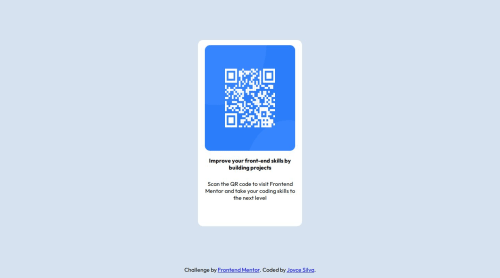Submitted over 1 year agoA solution to the QR code component challenge
My first solution using media query
@joycejsm

Solution retrospective
What are you most proud of, and what would you do differently next time?
I'm proud of doing this challenge without facing major bugs with simple things as positioning elements the right way, since it was something I had trouble with a while ago.
What challenges did you encounter, and how did you overcome them?The major challeng was to adapt the div's and image size for mobile screen, without letting it deformed. It was all about which right size use.
What specific areas of your project would you like help with?Sizes with percent and view width and view height, how and when should I use which one of them.
Code
Loading...
Please log in to post a comment
Log in with GitHubCommunity feedback
No feedback yet. Be the first to give feedback on Joyce Silva's solution.
Join our Discord community
Join thousands of Frontend Mentor community members taking the challenges, sharing resources, helping each other, and chatting about all things front-end!
Join our Discord